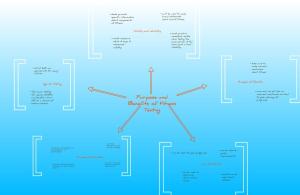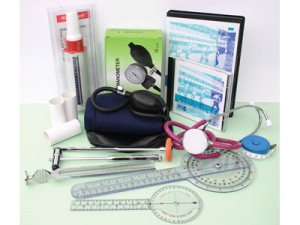The major bones, muscles, joints and joint actions involved
Major Bones:
– Femur – Fibula – Tibia – Vertebra – Metatarsals – Phalanges – Ulna – Radius – Humerus
Muscles:
– Gastrocnemius – Glutes – Quadriceps – Hamstrings – Biceps – Deltoids – Triceps – Trapezius – Latissimus Dorsi – Quadriceps – Abdominals
Joints:
– Ball and Socket joint of the elbow, hip and shoulder – Hinge joint of the elbow and patella and toes – Synovial and condyloid joint of the ankle
Joint Actions:
– Flexion and extension of the arms and legs from running action. Also extension of the legs while in the air and flexion after landing. – Plantar flexion as a result of pushing off the ground to jump – Abduction when the arms move away from the body to stay balanced for the jump
The physical fitness components required to optimize performance
– Flexibility: this is an important factor as it allows one to take large strides while running and increases the size of the leap that is required to jump as far as possible. It is also important to avoid injuring or tearing a muscle when taking of or landing.
– Speed: this component determines the distance of the jump because it contributes to the amount of time one has when in the air which covers distance.
– Power: this is needed for acceleration, take off power and reactive power. Power will allow one to be able to jump further when taking off after the sprint.
– Muscular Strength: Athletic performance depends either directly or indirectly on qualities of muscular strength. The stronger your muscles and the more forceful the contractions are in relationship to your own body weight, the faster you will run and the further you will jump. It is also important to avoid injury.
– Cardiovascular fitness: This is an overall beneficial component that allows one to train for long jump at a high level. It results in better sprint training and lower levels of fatigue.
Methods of assessing the components of fitness identified to optimise performance
Measuring Flexibility: The sit and reach test. To measure this, the person needs to stretch their hamstrings so that they can measure their flexibility with a tape measure after sitting and stretching over the testing box. Excellent for male is 10cm and excellent for female is 15cm.
Measuring Speed: One can use light gates or stopwatches to measure the time taken to cover a short distance. For long jump, the test needs to be done on foot (i.e. not swimming), and can be measured as a 20-50 metre sprint. For a 50 metre sprint excellent for male is 7.6 seconds, and female 8.1 seconds.
Measuring Power: The standing long jump test. The person must stand with toes behind a mark on the ground with feet slightly apart. Without taking a step, the person must then jump forward as far a possible, landing on both feet. They can swing their arms to help gain momentum and the distance is measured from where the person’s heels land.
Measuring muscular strength: The squat test. The subject must squat against a wall with hands on hips. The average time is about 30 seconds.
Measuring cardiovascular fitness: The beep test. This is a program that measures one’s fitness through a program called the beep test. There are 23 levels but the top result for an elite athlete should be about level 19.
Motion: There are various headings that come under motion such as; linear and projectile motion, speed and velocity, acceleration and inertia, momentum and performance in running technique.
Linear and projectile motion– Linear motion takes place in a straight line, and projectile motion is the path that the subject moves in the air without having a propulsion system. These motions are important in long jump once a person has pushed off the surface to jump into the sand pit. The aim is for the person to project themselves in a straight line and stay in a straight line to gain as much distance as possible.
Speed and Velocity– This is the rate at which a body moves from one location to another. The run up in long jump requires a lot of speed because the person needs to cover as much distance as they can after jumping. The velocity just calculates how much distance the subject covers during and after the ruin up.
Acceleration and Inertia– Acceleration is defined as the rate at which velocity changes with respect to time. For long jump, acceleration isn’t the most important thing as one usually gathers speed in a gradual way for the run up. However the subject does need to have a good start, and also needs to be able to accelerate well for the jump.
Momentum– This is the product of mass and velocity. The more speed a person gains from the run up, the more momentum they will have for the jump. Hence one needs to gain as much momentum as possible while sprinting to be able to jump far. This is very important in long jump because momentum produces a larger jump.
Performance in running technique – This is very important for long jump because good running technique means that the subject doesn’t have to waste extra energy on keeping the body facing the front, and will result in a bigger and more technical jump. When running up to the sand pit, the person usually takes large and fast strides to gain momentum and speed for the jump. Rhythm is important to get the speed and accuracy right. Running technique helps to produce the right speed and power to be able to jump well.
Force: This can be defined as a pushing or pulling action that causes a change of the state of a body. A long jumper who wants to increase their degree of force will need to increase their weight, but this can negatively affect their speed, so it is vital to get the balance right.
Applying force during take-off in long jump– This is an important part of long jump and requires a great amount of skill, which can be developed through practise. When taking off, the person needs to ensure that their hips are slightly forward of their shoulders. To prepare for the take off in long jump, the person needs to sink their hips and then raise their hips into the take-off phase. As a result of this, the second last stride is usually longer than normal and the final stride ends up being about 20cm shorter than their normal running stride. The take-off foot needs to be slightly in front of the hips when it reaches the board to prepare for take-off. The final two-foot supporters in the take-off should be flat contacts. Vertical height is achieved by the upwards explosive acceleration of the arms and the leg that isn’t taking off. This technique is vital for force to be at its most effective.
Absorbing force– Landing is just as important in long jump because it is easy to get injured if the force isn’t absorbed properly. When the feet get in contact with the floor, it should be on the balls of the feet, followed by the bending of the ankles, knees and hips. Arms should be stretched behind the body to compensate for the weight of the legs that are stretched out in front.
Balance and stability: There are two types of balance; static balance which is when a person remains over a somewhat fixed base, and dynamic balance which is when a performer is in motion. Stability relates to the degree to which a body resists being upset or moved. Balance is highly important in long jump. It is needed at the time of the launch so the body position and center of mass is at the proper point for maximum distance. Also, it is needed during flight to keep the center of gravity in the correct position above the legs. Balance is also needed during the landing so that the moment carries the jumper forward. If the center of gravity is in the wrong position, the jumper will fall backwards taking away distance that could have given him the better jump.
Megan





